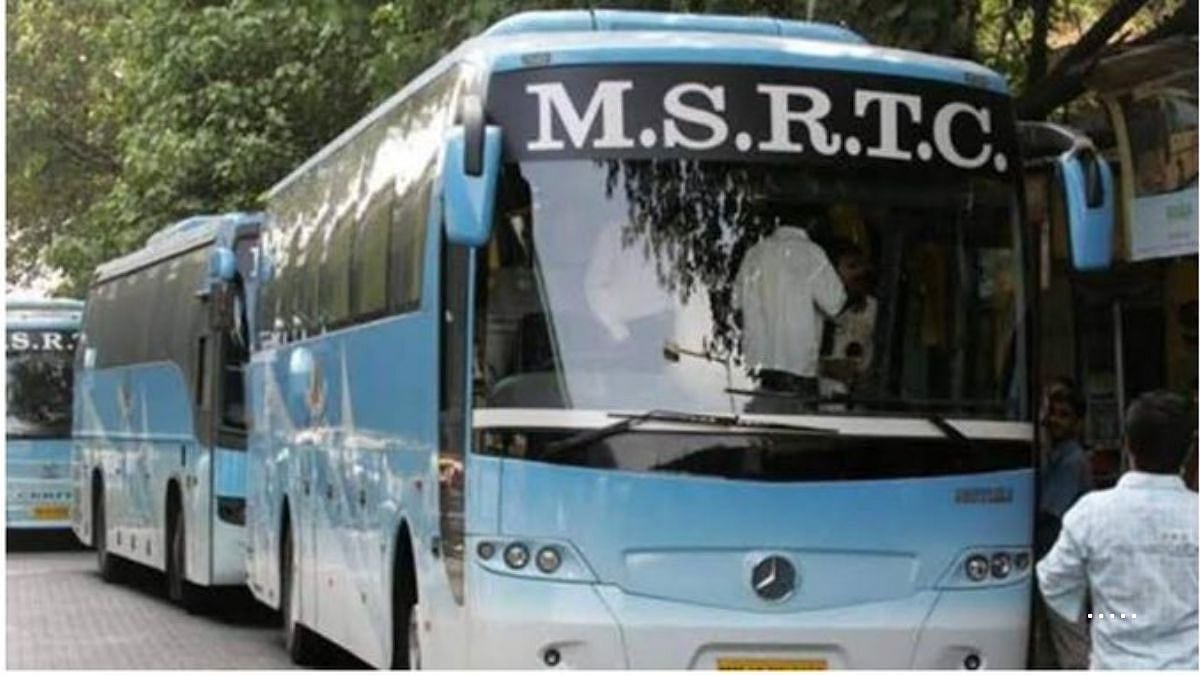The Maharashtra State Road Transport Corporation (MSRTC) has invited the ire of passengers by charging higher fares for electric buses with the same features and facilities by giving them different brand names and colours. | X @sickofwoken
Mumbai: The Maharashtra State Road Transport Corporation (MSRTC) has invited the ire of passengers by charging higher fares for electric buses with the same features and facilities by giving them different brand names and colours.
Experts and passengers have criticised the state-run corporation for the disparity in fares on the electric Shivneri and Shivai buses.
The MSRTC, the country’s largest state-run transport undertaking, operates a fleet of nearly 15,000 buses, ranging from non-AC services to premium air-conditioned electric coaches.
In January this year, the Maharashtra State Transport Authority (STA) approved a 14.95 per cent hike in the MSRTC bus fares.
The corporation charges Rs 21.25 per 6 km on blue ‘E-Shivneri’ buses and Rs 15.15 for the white-green ‘E-Shivai’, both built on the Olectra CX2 platform that serves various intercity routes in Maharashtra since inducted in its fleet on a gross cost contract (GCC) model.
According to MSRTC sources, the E-Shivneri fleet primarily operates on the Mumbai-Pune route, and the E-Shivai buses ply on the Thane-Alibag, Beed-Pune, and Nashik-Chhatrapati Sambhajinagar routes.
Both are 12-metre-long air-conditioned electric buses with similar features, such as push-back seats, charging points, and reading lamps.
The corporation also operates some Greencell-make E-Shivai intercity buses from Pune, Aurangabad, Kolhapur, Nashik and Solapur. In terms of safety and comfort features, these buses are not different from Olectra CX2 ones, sources said.
Passengers have, however, slammed the corporation for charging different fares for buses of the same model without any extra services, saying the move lacked logic and transparency.
“Changing the colour of a bus’s exterior and seat covers does not make it a new brand. There needs to be a clear distinction in terms of facilities, ride quality, or service levels to justify different fares,” bus enthusiast Rohit Dhende said.
Bus enthusiasts and passengers pointed out that disparity in fares isn’t limited to the air-conditioned electric bus services alone, and the case is the same with the MSRTC’s ordinary and semi-luxury buses.
Aditya Rane, a passenger, said over the past decade, the state-owned corporation has significantly upgraded its ordinary buses. As a result, there is no difference between these and semi-luxury buses, which charge 25 per cent more fares.
He said ordinary buses now have features such as charging ports, push-back seats, and 2×2 seating, which were once exclusive to semi-luxury buses.
“So why does the MSRTC still charge 25 per cent extra? Is the higher fare just for the colour or the label?” Rane questioned, adding that the corporation should either restore the quality of semi-luxury buses or charge ordinary bus fares.
A V Shenoy, a transport expert, said the MSRTC has 13 different types of services, and fare slabs are unnecessarily complicated.
Ideally, it should have a simplified fare chart, with four categories based on whether a bus is AC or non-AC and premium or ordinary, he said.
“This will simplify ticketing for the corporation and passengers. The slabs should be in multiples of Rs 5, which will reduce the problem of keeping and counting small change,” Shenoy said.
Transport experts and passengers argue that the State Transport Authority (STA) should have considered these factors before approving the fare hike for MSRTC buses.
When contacted, Bharat Kalaskar, additional transport commissioner, who is also secretary of the STA, said that the transport authority approves fare hikes as per the type of service and does not take the brand into consideration.
“Since you pointed this out, I will check and revert,” Kalaskar said.
Talking to PTI, Maharashtra Transport Minister Pratap Sarnaik, also chairman of the MSRTC, said he would not allow any injustice to passengers if there was so much difference in fares of two classes of buses with the same amenities.
“Let me check the technical aspects. If there are more facilities (in buses), I may not be able to do anything, but we will not allow passengers to be charged more,” he said.
Disclaimer: This is a syndicated feed. The article is not edited by the FPJ editorial team.
